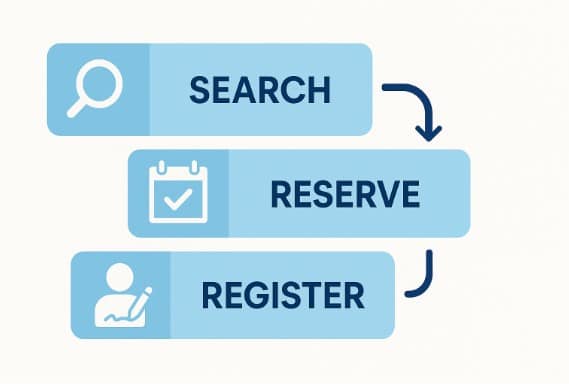Why Start a Business in Canada?
Canada ranks among the world’s easiest places to launch and scale a company. Entrepreneurs benefit from transparent regulations, solid intellectual-property enforcement, and a network of federal and provincial programs that reduce cost and risk. Add strong purchasing power, a talent-rich labour market, and gateways to both US and EU trade agreements and you have a landscape where new ventures thrive.
High-potential industries right now include clean technology, digital health, AI-driven software, agri-food processing, creative services, and professional consulting. If you aim to start a business in Canada that serves local or global clients, the country’s supportive ecosystem lets you move from idea to first sale quickly.
1. Validate Your Idea & Write a Solid Plan
1.1 Problem–Solution Fit
Launching any venture begins with a verified pain point. Start by writing a short problem statement, then speak to real prospects. Ask what frustrates them, how they solve it now, and what they would pay to change the status quo. Supplement interviews with Service Canada industry profiles and active threads on Canadian Reddit, LinkedIn, and trade forums. Blend qualitative quotes with quantitative evidence to confirm unmet demand.
When you’re starting a business in Canada, this early proof will sharpen the positioning, reduce rework, and show investors that you build to solve, not to guess.
1.2 Market Research in Canada
Size opportunity before spending a dollar. Pull population, income, and consumption statistics from Statistics Canada to calculate the total addressable, serviceable, and obtainable markets. Next, draft a price-versus-value grid. Plot each direct rival, then add substitute offers that could steal attention. Finally, scan federal and provincial rules.
Food ventures must meet CFIA and health-unit codes, while fintech tools must register with provincial securities regulators. This three-layer view confirms potential upside, flags competitive white space, and reveals compliance hurdles early.
1.3 Business Plan Creation
Turn research into a lender-ready document. Open with a clear value proposition and one target persona. Outline a revenue model, cost drivers, and five-year cash-flow projections that reflect Canadian tax deductions for small businesses. Detail milestones for product build, customer acquisition, and breakeven. Include contingency triggers, such as interest-rate shifts or supply chain delays.
A focused plan signals discipline to banks, BDC advisors, and angel investors.
2. Choose the Right Business Structure
Different structures affect liability, tax, and credibility.
| Structure | Legal Liability | Tax Treatment | Typical Set-up Cost | Suits Entrepreneurs Who |
| Sole proprietorship | Unlimited personal | Income taxed on T1 | $60–$120 provincial registration | Want full control and low admin |
| Partnership | Joint & several | Income flows to partners | $120–$200 | Have co-founders and clear agreement |
| Corporation (federal) | Liability limited to assets | 15% federal + provincial rate on T2 | ~$200 online, plus name search | Need outside investors, IP protection |
| Corporation (provincial) | Same as above | Same | $60–$450 depending on province | Serve mainly one province |
| Cooperative | Limited | Income taxed at entity level, patronage dividends | Varies | Pursue member benefit first |
Key points
- Incorporation vs sole proprietorship Canada: corporations shield personal assets and unlock lower small-business tax rates on the first $500,000 of profit.
- Federal vs provincial incorporation: federal provides nationwide name protection; provincial can be cheaper and simpler if you only operate locally.
- Choosing a business structure early saves on later legal-liability-protection changes.
3. Select and Protect Your Business Name
- Run a NUANS report to confirm name availability.
- Check the Canadian Intellectual Property Office (CIPO) trademark database to avoid infringement.
- Reserve the name federally or through ServiceOntario, Registre des entreprises (Québec), Small Business BC, or other provincial portals.

4. Register or Incorporate
4.1 Sole Proprietorship or Partnership
Register online with your province, pay the fee, and receive a master licence or partnership declaration.
4.2 Corporation Incorporation
- File articles of incorporation federally through Corporations Canada or provincially.
- Obtain a corporate CRA business number immediately after approval.
- Open My Business Account to add tax program accounts—GST/HST registration, payroll, import-export—as needed.
Tip: Register GST/HST as soon as annual revenue is likely to exceed $30,000. Early registration also lets you claim input-tax credits.
5. Secure Licences & Permits
Canada applies permits at three levels. Use BizPaL’s wizard to enter location and industry, then download a personalised checklist. A Toronto café will see municipal food-handling certificates, provincial Occupational Health and Safety requirements, and a CRA GST/HST account. A contractor will add building-code approvals and Workplace Safety and Insurance Board coverage. A craft distiller needs a provincial liquor licence plus a Canada Revenue Agency excise registration. Cross-border trucking firms must hold a Canadian business licence and carrier insurance.
Submitting complete, accurate forms speeds approval and keeps opening dates on schedule.
6. Finance Your Business
6.1 Estimate Start-up Cost
List every launch expense: equipment, leasehold improvements, three months of wages, marketing, and a working-capital reserve. Use supplier quotes, local rent reports, and provincial payroll calculators to stay realistic.
6.2 Funding Sources
Inject personal capital first to retain equity and show commitment. Compare bank products, then price BDC term loans with flexible amortisation. Explore small-business grants under the Canada Small Business Financing Program and regional development agencies. If you run research-heavy projects, claim SR&ED credits and recover up to 64 percent of eligible R&D costs. When traction appears—recurring revenue, signed pilots—pitch angels or VCs with investor documents prepared by SAZ Square.
Solid cash planning lets you confidently start any business in Canada virtually without sudden liquidity shocks.
Canada’s two primary money paths—non-repayable grants and repayable loans—differ sharply in who can apply, how much cash is on the table, and how fast decisions arrive. The table below distils the essentials so you can choose the right mix as you start your business in Canada.
6.3 Grants vs Loans | Side-by-Side Snapshot
| Criteria | Grants | Loans |
| Eligibility | Incorporated or registered Canadian SMEs (often ≤ 500 employees) in targeted sectors; programs typically require a CRA number and matching funds (e.g., CanExport SMEs). | Start-ups or existing firms with ≤ $10 M in gross revenue; solid credit, collateral, and a lender-ready plan; farming businesses excluded under CSBFP. |
| Typical ticket size | $10 k – $50 k for export micro-grants like CanExport, $250 k – $5 M for innovation or RDA scale-up funds (e.g., RAII). | Up to $100 k via BDC online small-business loan. Up to $1 M term loan + $150 k line of credit through CSBFP. |
| Turn-around time | Decisions range from 25 working days for CanExport to 4–6 weeks for most SME grants; SR&ED refunds process 60–120 days after filing. | BDC Express funds within 48 h of approval; many bank loans close in a few days to several weeks depending on size and due diligence. |
Note: The table data above is sourced from Canada.ca, Innovation, Science and Economic Development Canada | Official site, BDC, and other relevant references.
Key takeaway: Grants stretch cash because they’re non-repayable but competitive and paperwork-heavy; loans move faster, offer larger cheques, and build credit—yet add debt. Most founders blend both to cover equipment, working capital, and R&D while keeping dilution and risk in balance.
7. Open Business Banking & Set Up Operations
Open chequing and savings accounts with a chartered bank. Provide incorporation documents or registration number plus ID. Automate bookkeeping using QuickBooks Online or Wave, integrate with CRA’s direct GST/HST remittance. Track receipts digitally for tax-deduction proof.
Operations checklist:
- Point-of-sale or invoicing system
- Cloud document storage with encryption
- Insurance policies: general liability, cyber, professional errors & omissions
8. Hire Employees the Right Way
- Add a payroll account in My Business Account.
- Withhold CPP, EI, and income tax; remit by the 15th of each month.
- Issue T4 slips before the last day of February.
- Provide workplace insurance via your provincial workers’ comp board.
Failure to remit can incur CRA penalties. Use cloud payroll to schedule automated submissions and meet compliance & annual filings requirements.
9. Shape Your Marketing, Sales & Launch Plan
Secure a .ca domain that matches your registered name, then claim consistent handles on LinkedIn, Instagram, and X. Build a responsive website and open a Google Business Profile to capture local search. Draft a positioning statement that states category, target customer, and single benefit. Price using a value-based formula: perceived savings or revenue gain multiplied by a sharing ratio. Add provincial sales tax where applicable and include GST/HST numbers on invoices. Prelaunch content, email sign-ups, and limited founder deals create momentum before day one.

10. Keep Up With Compliance & Tax Filing
| Entity Type | Income-Tax Return | Filing Deadline | Extra Requirements |
| Sole proprietor | T1 with Form T2125 | 15 June (tax owing 30 April) | GST/HST if registered |
| Corporation | T2 return | Six months after year-end | Annual return to Corporations Canada, provincial renewal fees |
Maintain records for six years in case of CRA audit. Deduct legitimate expenses—home-office, vehicle, SR&ED R&D costs—to lower business tax in Canada.
11. Grow With Grants, Export Help & Innovation Credits
Put early profits back to work. Hire specialists, upgrade machinery, or enter new provinces. Book time with BDC Advisory for growth coaching on strategy and cash flow. Apply to CanExport to subsidise trade-show booths and overseas market research. Layer Industrial Research Assistance Program funds and provincial R&D incentives on top of SR&ED to extend your product roadmap. Structured reinvestment compounds gains and keeps Canadian ventures globally competitive.
SAZ Square guides founders through each application step to secure funding for Canadian startups faster.
Tools & Resources at Your Fingertips
- Canada.ca business start-up portal
- ServiceOntario and Registre des entreprises for filings
- Small Business BC guides for west-coast founders
- BizPaL permit wizard
- QuickBooks + CRA My Business Account integration for seamless GST/HST
- SAZ Square investor-grade document services
Pathways for Foreign Entrepreneurs
Canada welcomes global founders. They can start a business in Canada through clear immigration streams.
The Start-up Visa Program grants permanent residency when a designated angel, VC, or incubator backs your idea. Submit a letter of support, meet language benchmarks, and bring your family. Provincial Nominee Program entrepreneur streams offer another route. Provinces invite owners who commit defined capital, create jobs, and manage operations on site.
After landing, follow the same steps above to set a solid base for your business legally: obtain a CRA business number, open banking, and register for GST/HST.
Wrap Up: Move From Idea to First Customer
Launching in Canada is straightforward when you follow a proven roadmap. Validate need, select the right structure, register properly, fund wisely, and stay compliant. Whether you are a local visionary or a foreign entrepreneur, the window to start a business in Canada and capture growing markets has never been wider.
Next Step: Book a no-obligation strategy call with SAZ SQUARE Business Consultants. Get customised advice, investor-ready documents, and ongoing support—so you can focus on growth instead of red tape.
FAQs
How do I open a business bank account in Canada?
Choose a bank, apply online or in-branch, and present one government-issued ID plus your articles of incorporation or master business licence to activate the account.
How much does it cost to start a business in Canada?
Expect basic registration fees from $60 (sole proprietorship) to about $200 (federal incorporation), with permits potentially adding several hundred dollars.
What is the best business to start with $1,000?
Service-based micro ventures—freelance design, virtual assistance, dropshipping, or handmade e-commerce—rank among the best businesses you can launch in Canada with roughly $1,000.
What is the easiest business to start in Canada?
The easiest businesses often run online, need no storefront, and carry light regulation—think tutoring, consulting, digital products, or home-based crafts targeting local Canadian markets.



